|
|
General: KAABA (ORIENTADA A LA ESTRELLA CANOPUS/ALFA/CONSTELACION DE QUILLA)-NEXO HORUS
Elegir otro panel de mensajes |
|
|
La Kaaba en la Meca - Es la hora del crepúsculo en la ciudad de Bagdad...
por Bibiana Bonmatí
11-06-2003
Es la hora del crepúsculo en la ciudad de Bagdad. El moecín sube al minarete y grita “Allaahu Akbar...” (“Alá es el más grande...”). Es el adhán, la llamada al Salat Maghrib. Los musulmanes de la ciudad dejan sus tareas y se dirigen a la mezquita. Mirando al mihrab, rezan la primera oración del día. Aunque este acto no parezca tener nada que ver con la astronomía o la ciencia, si nos remontamos en el tiempo vemos que está estrechamente relacionado.
La historia se inicia en el año 632 d.C., con la muerte del Profeta Muhammad (Mahoma). Éste fue el principio del islamismo, que unió a la mayoría de los pueblos árabes en una sola fe. Los ritos de esta nueva religión requieren conocimientos astronómicos y matemáticos complejos. Las oraciones se realizan a ciertas horas, que vienen determinadas por el camino del Sol a lo largo del día, y el orador debe orientarse a la Kaaba, que es la mezquita sagrada de la ciudad de la Meca.
Esta religión se extendió por la India, Asia Central y África hasta llegar a Europa. Por tanto, necesitaba establecer la dirección a la Meca en cada una de las ciudades. Para encontrar esta dirección sagrada se debían determinar latitudes y longitudes de cada lugar sin olvidarnos de ¡que la Tierra es redonda! El problema, pues, era básicamente matemático y de astronomía esférica.
En cada mezquita, una persona -el muecín-, se encarga de controlar las horas y hacer la llamada a la oración. En el Islam se realizan cinco Salats (oraciones) al día. La determinación de las horas depende de la posición del Sol en el cielo. Con el ocaso empieza un nuevo día. En es el momento de la primera oración, llamada Salat Maghrib. La segunda, Salat Isha, coincide con la caída de la noche. La tercera, Salat al Fajr, es al amanecer. La cuarta coincide con el momento en que el Sol cruza el meridiano, y se conoce como Salat Duhr. La quinta y última del día, Salat Asr, se realiza, en algunos lugares, cuando el tamaño de la sombra de un objeto es el doble del tamaño verdadero.
La Kaaba representa la primera casa de la humanidad. Se dice que su origen se remonta a Adán, a la creación del ser humano. Posteriormente, Noé la salvó del diluvio y Abraham la reconstruyó. Con anterioridad, los primeros árabes islámicos al rezar miraban en dirección Al-Quds (Jerusalén), y fue con el Corán cuando se estableció finalmente la Kaaba como nuevo lugar hacia el que rezar.
La Kaaba se describe como el motor inmóvil de una “galaxia humana” que gravita alrededor de ella desde hace miles de años, día y noche. Esta comparación se debe a que la Meca es la ciudad a donde suele hacerse el peregrinaje que han de realizar los musulmanes al menos una vez en la vida. Al llegar a la Kaaba, los fieles dan vueltas alrededor formando una “galaxia humana”. Es la casa alrededor de la cual giran los peregrinos como giran los planetas alrededor del Sol. Los fieles se mueven en sentido contrario al de las agujas del reloj: como si se remontaran al pasado, al tiempo de los profetas. Además, debido a la gran expansión que tuvo el Islam, siempre en algún punto del mundo había alguna persona mirando a la Kaaba para la oración.
El diseño de la Kaaba, anterior a la llegada del Islam, también sigue criterios astronómicos. Las paredes y esquinas están dirigidos al orto y ocaso del Sol y a ciertas estrellas fijas. La base de la Kaaba, que es rectangular, tiene su eje mayor apuntando a la estrella Canopus (estrella alfa de la constelación de la Quilla), y el eje menor a la salida del Sol de verano y al ocaso de invierno. Estas orientaciones estaban asociadas a fenómenos meteorológicos, como los vientos y las lluvias.
En cualquier caso, la cuestión importante era la determinación de la Quibla: dirección desde cualquier lugar del mundo hacia la Kaaba. Así pues, el problema básico era determinar la latitud del lugar, la de la Meca, y la diferencia longitudinal.
En el año 1000, Ibn-shuqara, un estudiante de religión de Yemen, inventó tres esquemas sobre la sagrada geografía con el mundo dividido en 8, 11, y 12 sectores alrededor de la Kaaba. En 1200, las versiones más simples de su esquema de los 12 sectores aparecen en los trabajos geográficos populares de Yaqut al-Rumi. Cincuenta años más tarde, Al-qaswini contribuyó a estos estudios y, en 1400, Al-qalqashandi realizó una enciclopedia sobre este tema. Del siglo XV al siglo XIX, proliferaron distintos esquemas de entre 8 y 72 divisiones del mundo alrededor de la Kaaba.
Poco a poco se fue afinando el cálculo de la Quibla para cada grado de latitud y diferencia de longitud desde La Meca, basadas en aproximaciones y en fórmulas exactas. Numerosos científicos musulmanes discutieron el problema presentando diversas soluciones. Mediante trigonometría esférica, redujeron problemas de tres dimensiones a dos, resolviéndolos por geometría o trigonometría plana. También, formularon soluciones utilizando instrumentos de cálculo, una de las más finas de la matemática medieval fue realizada en Damasco en el siglo XIV por Al-halili.
Para que los fieles supieran cuál era la Quibla se construía dentro de la mezquita el Mihrab, una hornacina generalmente con una ornamentación especial, distinguible de la del resto de la mezquita, hacia donde se orientaban los fieles. En algunos casos ocurría que en una mezquita, a medida que la determinación de la Quibla iba mejorando se construía más de un Mihrab.
En definitiva, las mezquitas no son solamente patrimonio de la religión y del arte ya que encierran bajo sus paredes un poquito de ciencia.
* Agradecimiento a Aahd Hagar por la conferencia Astronomía medieval islámica, impartida en el Instituto de Astrofísica de Canarias (IAC).
|
|
|
|
|
EL NEXO HORUS, EN EL CONTEXTO A LA RESURRECCION DEL SEÑOR, ES OBVIO UNA REFERENCIA A LA KAABA ISLAMICA Y A LA ESTRELLA CANOPUS. EL TEMPLO DE HORUS EN EDFU, ESTABA ORIENTADO HACIA DICHA ESTRELLA, QUE APARENTEMENTE TIENE UN NEXO CON EL ARCA DE NOE.
|
|
|
|
|
Argo Navis
Jason's Ship
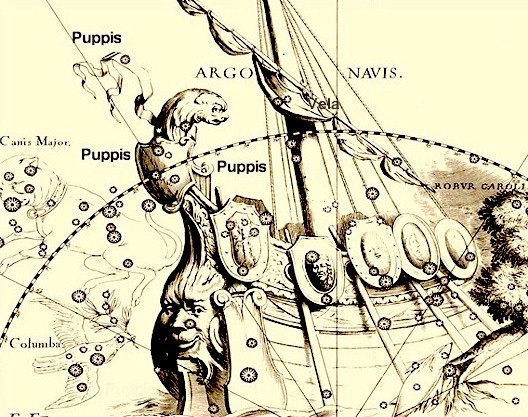 Hevelius, Firmamentum, 1690. The Ship is said to be moving stern-forward
"Then famed Argo, raised to the skies from the sea which it was the first to cross, occupies the heaven it earned through grievous perils in a bygone age, made a god for having given safety to gods" [Manilius, Astronomica, book 1, p.37].
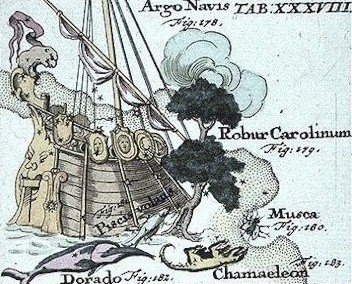 Johann Rost, Atlas portatalis coelestis, 1723 1 Johann Rost, Atlas portatalis coelestis, 1723 1Argo Navis is no longer an officially recognized constellation, it has been split up into three constellations; Carina the Keel, Vela the Sails, Puppis the Stern, plus a subordinate division of Argo now called Pyxis Nautica, the Nautical Box or Mariner's Compass, and which used to be called Malus, the Mast. In Greek Mythology Argo Navis represents the Ship used by Jason and fifty Argonauts to sail to fetch the Golden Fleece from Colchis (Iolcus) in the Black Sea. The Argo was built by the shipwright Argos or Argus. It was built at the port of Pagasae, using timber from nearby Mount Pelion.
Most of what we know about the Argo comes from the Greek poet Apollonius Rhodius, 3rd century B.C. from his epic poem, The Argonautica, a translation of which can be read online: http://omacl.org/Argonautica/
"Ancient authors were divided about the origin of the name of the ship. Some ascribed it to the name of the person who built it, Argus, son of Phrixus; others to the Greek word argos, 'swift', as being a light sailor; others to the city of Argos, where they suppose it was built; yet others to the Argives, who went on board it, according to the distich quoted from ancient Roman statesman Cicero, in his first Tusculan" [1].
The -naut of argonaut and the Navis of Argo Navis come from the same indo-European root *náu- 'Boat or ship'. Derivatives: naval, nave¹ (from Latin navis), navicular bone (also called scaphoid; shaped like a boat), navigate, navy, navy, nausea, nautical, noise, aeronaut, aquanaut, Argonaut, astronaut, cosmonaut, from Greek naus, ship, and nautes, sailor. [Pokorny 1. naus- 755. Watkins] The color navy derived from the navy uniforms worn in the navy. [These words are not related to the word 'navel' meaning umbilicus.]
Argo has been identified with a number of arks (the word 'ark' might also relate to the constellation Ara?):
"Egyptian story said that it was the ark that bore Isis and Osiris over the Deluge; while the Hindus thought that it performed the same office for their equivalent Isi and Iswara. And their prehistoric tradition made it the ship Argha for their wandering sun, steered by Agastya, the alpha star of Carina, Canopus. In this Sanskrit argha we perhaps may see our title" [Star Names].
Canopus is the alpha star of Carina. Plutarch says:
"Moreover, they give to Osiris the title of general, and the title of pilot to Canopus, from whom they say that the star derives its name; also that the vessel which the Greeks call Argo, in form like the ship of Osiris, has been set among the constellations in his honour, and its course lies not far from that of Orion and the Dog-star; of these the Egyptians believe that one is sacred to Horus and the other to Isis." [Plutarch, Moralia]
Christian legend identifies the constellation as Noah's Ark:
"The biblical school of course called it Noah’s Ark, the Arca Noachi, or Archa Noae as Bayer wrote it; Jacob Bryant, the English mythologist of the last century, making its story another form of that of Noah. Indeed in the 17th century the Ark seems to have been its popular title" [Star Names].
Nature gives hints on how to build a ship:
"Learn of the little nautilus to sail, Spread the thin oar, and catch the driving gale. [Line 177, An Essay on Man, a poem by Alexander Pope, 1733.]
The argonauts (genus Argonauta, the only extant genus in the Argonautidae family) are a group of pelagic octopuses, the Nautilus, Argonaut, or sailor-fish, a shell-fish found in the Mediterranean and in the Indian Ocean, and usually at the bottom of the sea, yet is able to rise to the surface, which it is fond of doing in calm weather. The shell is so thin that it is called the paper Nautilus. It lies on its back floating on the water. It employs some of its arms as oars to make progress, but if a gentle breeze arises it raises two of them upright, and extending them, spreads the membrane between them into a sail, which catches the wind ; its other arms hang out as a rudder to steer it the way it wishes [Significant etymology]. Female argonauts produce a laterally-compressed calcareous eggcase in which they reside. This "shell" has a double keel fringed by two rows of alternating tubercles.
The astrological influences of the constellation given by Manilius:
"Lord of the flock and conqueror of the sea, to which, a horn lost and robbed even of its fleece, it gave its burden [Helle] and a name, the Ram [Aries], which bade the magic arts of Colchian Medea (who married Jason) journey to Iolcos (Colchis) and spread her poisons throughout the world, even now draws Argo by the poop to its side, as though still on the seas, through the stars on its right [translator's note: An error: Argo is a southern constellation and rises to the left of the zodiac, but never contemporaneously with Aries]. But the foremost part of the poop emerges to show its fires only when the Ram has brought four degrees of his countenance above the horizon.
"Whoever is born on earth at the rising of Argo will be the captain of a ship; holding fast to his helm, he will forsake dry land for the sea and pursue his fortune with the winds; he will crave to traverse the entire ocean with his fleet, visit foreign climes and the deep Phasis, and better the speed of Tiphys towards the rocks (the Symplegades). Take away the births of men situated beneath this constellation, and you will take away the Trojan war and the fleet which both set sail and made land fall with bloodshed (of Iphigenia and Erotenlaus); then will no Xerxes launch Persia on the main or open up a new sea (by cutting a canal through Athos) and cover over the old (by the vastness of his fleet, some interpreters see an allusion to the bridging of the Hellespont, but Housman considers this unlikely); no reversal of Salamis at Syracuse will overwhelm Athens, nor will Punic prows ride every sea, the world within Actium's bays hang in the balance between opposing forces, and heaven's destiny float at the mercy of the waves. Men born under Argo are the guides who guide our ships over the trackless deep; it is through them that land meets land and the whole world's wares are summoned with the winds to supply men's divers needs". [Manilius, Astronomica, book 5, p.303].
© Anne Wright 2008.
| In 1763 the French cartographer De Lacaille divided the larger constellation of Argo Navis into its constituent sections, Carina, Puppis, Pyxis, and Vela. |
| Fixed stars in Carina the Keel |
| Star |
1900 |
2000 |
R A |
Decl 2000 |
Lat |
Mag |
Sp |
| Canopus alpha (α) |
13CAN35 |
14CAN58 |
6h 23m 57.1s |
-52° 41' 45" |
-75 49 50 |
-0.70 |
F0 |
| chi (χ) |
29LEO22 |
00VIR45 |
7h 56m 46.7s |
-52° 58' 56" |
-70 19 46 |
3.60 |
B3 |
| Avior epsilon (ε) |
21VIR47 |
23VIR08 |
8h 22m 30.8s |
-59° 30' 35" |
-72 40 48 |
1.74 |
K0 |
| Tureis iota (ι) |
03LIB58 |
05LIB20 |
9h 17m 5.4s |
-59° 16' 31" |
-67 36 02 |
2.25 |
F0 |
| Foramen eta (η) |
20LIB47 |
22LIB09 |
10h 45m 3.6s |
-59° 41' 3" |
-58 55 09 |
1.90 var |
P |
| upsilon (υ) |
21LIB31 |
22LIB54 |
9h 47m 6.1s |
-65° 4' 19" |
-67 29 43 |
3.15 |
F0 |
| Miaplacidus beta (β) |
00SCO37 |
01SCO58 |
9h 13m 12s |
-69° 43' 2" |
-72 13 48 |
1.80 |
A0 |
| omega (ω) |
06SCO04 |
07SCO27 |
10h 13m 44.2s |
-70° 2' 17" |
-67 22 39 |
3.56 |
B8 |
| Fixed stars in Puppis the Stern |
| Star |
1900 |
2000 |
R A |
Decl 2000 |
Lat |
Mag |
Sp |
| nu (ν) |
15CAN46 |
17CAN09 |
6h 37m 45.7s |
-43° 11' 46" |
-66 04 49 |
3.18 |
B8 |
| tau (τ) |
26CAN21 |
27CAN44 |
6h 49m 56.2s |
-50° 36' 53" |
-72 51 29 |
2.83 |
G8 |
| pi (π) |
28CAN56 |
00GEM19 |
7h 17m 8.6s |
-37° 5' 51" |
-58 31 49 |
2.74 |
K5 |
| L (L1) |
02LEO03 |
03LEO26 |
7h 13m 13.4s |
-45° 10' 59" |
-65 58 08 |
var |
M5 |
| Azmidiske xi (ξ) |
04LEO39 |
06LEO02 |
7h 49m 17.7s |
-24° 51' 35" |
-44 56 40 |
3.47 |
G6 |
| sigma (σ) |
07LEO19 |
08LEO42 |
7h 29m 13.8s |
-43° 18' 5" |
-63 46 54 |
3.27 |
M0 |
| rho (ρ) (15 Puppis) |
10LEO01 |
11LEO24 |
8h 7m 32.6s |
-24° 18' 15" |
-43 16 29 |
2.88 |
F5 |
| Naos zeta (ζ) |
17LEO10 |
18LEO33 |
8h 3m 35.1s |
-40° 0' 12" |
-58 21 06 |
2.27 |
O5 |
| Fixed stars in Pyxis the Mariner's Compass |
| Star |
1900 |
2000 |
R A |
Decl 2000 |
Lat |
Mag |
Sp |
| gamma (γ) |
24LEO06 |
25LEO29 |
8h 50m 31.9s |
-27° 42' 36" |
-43 17 42 |
4.19 |
K4 |
| alpha (α) |
25LEO08 |
26LEO31 |
8h 43m 35.5s |
-33° 11' 11" |
-48 55 34 |
3.70 |
B1 |
| beta (β) |
25LEO26 |
26LEO49 |
8h 40m 6.2s |
-35° 18' 30" |
-51 09 30 |
4.04 |
G5 |
| Fixed stars in Vela the sail |
| Star |
1900 |
2000 |
R A |
Decl 2000 |
Lat |
Mag |
Sp |
| gamma (γ) |
25LEO59 |
27LEO22 |
8h 9m 32s |
-47° 20' 12" |
-64 28 44 |
1.70 var |
B3 |
| Alsuhail lambda (λ) |
09VIR49 |
11VIR11 |
9h 7m 59.8s |
-43° 25' 57" |
-55 52 21 |
2.22 |
K4 |
| psi (ψ) |
13VIR22 |
14VIR45 |
9h 30m 42s |
-40° 28' 0" |
-51 09 53 |
3.64 |
A7 |
| delta (δ) |
17VIR35 |
18VIR58 |
8h 44m 42.2s |
-54° 42' 30" |
-67 11 51 |
2.01 |
A0 |
| q |
25VIR37 |
27VIR00 |
10h 14m 44.2s |
-42° 7' 19" |
-48 15 31 |
4.09 |
A2 |
| Markeb kappa (κ) |
27VIR31 |
28VIR54 |
9h 22m 6.8s |
-55° 0' 39" |
-63 43 16 |
2.63 |
B3 |
| phi (φ) |
04LIB35 |
05LIB58 |
9h 56m 51.8s |
-54° 34' 4" |
-59 56 56 |
3.70 |
B7 |
| mu (μ) |
09LIB08 |
10LIB31 |
10h 46m 46.2s |
-49° 25' 12" |
-51 05 10 |
2.84 |
G5 |
 Urania's Mirror 1825 Urania's Mirror 1825
Argo Navis, the Ship Argo, generally plain Argo, — erroneously Argus, from confusion with its genitive case (Argus Panoptes, Argus "all eyes"), — and Navis, is the German Schiff, the French Navire Argo, and the Italian Nave Argo.
It lies entirely in the southern hemisphere, east of Canis Major, south of Monoceros and Hydra, largely in the Milky Way, showing above the horizon of New York city only a few of its unimportant stars; but it covers a great extent of sky, nearly seventy-five degrees in length, — Manilius calling it nobilis Argo, — and contains 829 naked-eye components. The centre culminates on the 1st of March.
La Caille used for it nearly 180 letters, many of them of course duplicated, so that although this notation was adopted in the British Association Catalogue, recent astronomers have subdivided the figure for convenience in reference, and now know its three divisions as Carina, the Keel, with 268 stars, Puppis, the Stern, with 313, and Vela, the Sail, with 248. This last is the German Segel.
La Caille, moreover, formed from stars in the early subordinate division Malus, the Mast, Pyxis Nautica, the Nautical Box or Mariner's Compass, the German See Compass, the French Boussole or Compas de Mer, and the Italian Bussola; and this is still recognized by some good astronomers as Pyxis.{Page 65} From other stars Bode formed Lochium Funis, his Logleine, our Log and Line, now entirely fallen into disuse.
The Ship appears to have no bow, thus presenting the same sectional character noticeable in Equuleus, Pegasus, and Taurus, and generally is so shown on the maps. It was in reference to this that Aratos wrote:
"Sternforward Argo by the Great Dog's tail
Is drawn; for hers is not a usual course,
But backward turned she comes, as vessels do
When sailors have transposed the crooked stern
On entering harbour; all the ship reverse,
And gliding backward on the beach it grounds.
Sternforward thus is Jason's Argo drawn.
This loss of its bow is said to have occurred when Argo
"pass'd Through Bosporus betwixt the justling rocks — "
the Symplegades, the Cyanean (azure), or the Planctae Rocks at the mouth of the Euxine Sea. Yet Aratos may have thought it complete, for he wrote: "All Argo stands aloft in sky," and
"Part moves dim and starless from the prow
Up to the mast, but all the rest is bright;"
and it has often been so illustrated and described by artists and authors. The Alfonsine Tables show it as a complete double-masted vessel with oars, and Lubienitzki, in the Theatrum Cometicum of 1667, as a three-masted argosy with a tier of ports and all sails set full to the wind.
Mythology insisted that it was built by Glaucus, or by Argos, for Jason, leader of the fifty Argonauts, whose number equaled that of the oars of the ship, aided by Pallas Athene, who herself set in the prow a piece from the speaking oak of Dodona; the Argo being "thus endowed with the power of warning and guiding the chieftains who form its crew." She carried the famous expedition from Colchis in Thessaly to Aea in Colchis, (Colchis was the district along the eastern shore of the Euxine Sea, now Mingrelia.] in search of the golden fleece, and when the voyage was over Athene placed the boat in the sky.
Another Greek tradition, according to Eratosthenes, asserted that our constellation represented the first ship to sail the ocean, which long before {Page 66} Jason's time carried Danaos with his fifty daughters from Egypt to Rhodes and Argos, and, as Dante wrote, "Startled Neptune with the aid of Argo."
Egyptian story said that it was the ark that bore Isis and Osiris over the Deluge; while the Hindus thought that it performed the same office for their equivalent Isi and Iswara. And their prehistoric tradition made it the ship Argha for their wandering sun, steered by Agastya, the star Canopus. In this Sanskrit argha we perhaps may see our title; but Lindsay derives Argo from arek, a Semitic word, used by the Phoenicians, signifying "long," this vessel having been the first large one launched.
Sir Isaac Newton devoted much attention to the famous craft, fixing the date of its building about 936 B.C., forty-two years after King Solomon.
With the Romans it always was Argo and Navis, Vitruvius writing Navis quae nominatur Argo: but Cicero called it Argolica Navis and Argolica Puppis; Germanicus, Argoa Puppis; Propertius, the elegiac poet of the 1st century before our era, Iasonia Carina; Ovid, Pagasaea Carina and Pagasaea Puppis, from the Thessalian seaport where it was built; Manilius, Ratis Heroum, the Heroes' Raft, "which now midst Stars doth sail"; and others, Navis Jasonis, or Osiridis, Celox Jasonis, Carina Argoa, Argo Ratis, and Navigium Praedatorium, the Pirate Ship. While somewhat similar are Currus Maris, the Sea Chariot, the Currus Volitans of Catullus, who said that in Egypt it had been the Vehiculum Lunae.
It also was Equus Neptunias; indeed Ptolemy asserted that it was known as a Horse by the inhabitants of Azania, the modern Ajan, on the northeastern coast of Africa, south of Cape Gardafui.
The Arabians called it Al Safinah, a Ship, and Markab, something to ride upon, that two or three centuries ago in Europe were transcribed Alsephina and Merkeb.
Grotius mentioned Cautel as a title for Puppis, "from the Tables," but he added Hoc quid sit nescio.
The biblical school of course called it Noah’s Ark, the Arca Noachi, or Archa Noae as Bayer wrote it; Jacob Bryant, the English mythologist of the last century, making its story another form of that of Noah. Indeed in the 17th century the Ark seems to have been its popular title.
In Hewitt's Essays we find a reference to "the four stars which marked the four quarters of the heavens in the Zendavesta, the four Loka-palas, or "nourishers of the world," of the Hindus; and that author claims these for {Page 67} Sirius in the east, the seven stars of the Greater Bear in the north, Corvus in the west, and Argo in the south. He gives the latter's title as Sata Vaesa, the One Hundred Creators; all these imagined as forming a great cross in the sky. The differing Persian conception of this appears in the remarks on Regulus, — alpha Leonis.
The Chinese asterism Tien Meaou probably was formed from some components of Argo.
The constellation is noticeable in lower latitudes not only from its great extent and the splendor of Canopus, but also from possessing the remarkable variable eta (eta Carina, Foramen) and its inclosing nebula.
Near the star s' Carinae appeared, between March 5 and April 8, 1895, a nova with a spectrum similar to those of the recent novae in Auriga and Norma.
. . . like a meadow which no scythe has shaven,
Which rain could never bend or whirl-blast shake,
With the Antarctic constellations paven,
Canopus and his crew, lay the Austral lake.
--Percy Bysshe Shelley's The Witch of Atlas.
[ Star Names: Their Lore and Meaning, Richard H. Allen, 1889.]
|
|
|
|
|
-
www.philipcoppens.com/canopus_art1.html
We know that Sirius is linked with Isis, but what is Canopus? ... Orion and the Dog
star; the former of these the Egyptians hold sacred to Horus, the latter to Isis.
-
www.philipcoppens.com/canopus_art6.html
The book argued that Canopus was the forgotten “star” of the Egyptian ... in “The
Canopus Revelation” is shown to be erroneous: Orion was linked with Horus, ...
-
es.wikipedia.org/wiki/Vaso_canopo
Para otros usos de este término, véase Canopus. Los cuatro ... a unas
divinidades llamadas Hijos de Horus, quienes protegían su contenido de la
destrucción.
-
en.wikipedia.org/wiki/Canopic_jar
... the mistaken association by early Egyptologists with the Greek legend of
Canopus. ... Hieroglyphs for the four sons of Horus used on an Egyptian canopic
jar.
-
books.google.com.ar/books?isbn=1602060843
Horus was said to duplicate or rise again as the White God. ... Another name of
this dual divinity is Sut-Nub, the original of Sothis-Canopus in the stellar phase ...
-
www.shmoop.com/sons-horus/bottle-brigade.html
The Four Sons of Horus aren't the only gods who live in jars or bottles. Their
containers, called canopic jars, are actually named for the Greek demigod
Canopus.
-
books.google.com.ar/books?isbn=1317654854
Ё} www Herz: tatu, Horus lands, i.e., temple estates, кип: R. 9, 21, 23, 46. ä i р ä)
ä E 113.911, singers, С. 34. à ì ii ä) Ё Iles-tu» praised, О. 34. [l l] Q2 in мы, ...
-
books.google.com.ar/books?isbn=1317654919
... was made “ready for war with weapons of every kind by 23 “the rebels who
were in it—now they had corn- emitted great acts of sacrilege in the land of “
Horus, ...
-
books.google.com.ar/books?isbn=1616405570
Horus was said to duplicate or rise again as the White God. ... Another name of
this dual divinity is Sut-Nub, the original of Sothis-Canopus in the stellar phase; ...
-
books.google.com.ar/books?id=HDVbAAAAcAAJ
CANOPUS. 409] NICOLO. In France. Canopus in front ; the hend of Isis
decorated' with the lotus and two serpents on the forehead. NVater seems to run
from the ...
-
Anunciowww.urbix.com.ar/
Sepa como el movimiento peatonal Impacta sobre su Negocio
|
|
|
|
|
Canopus (estrella)
De Wikipedia, la enciclopedia libre
Para otros usos de este término, véase Canopus. Canopus o Canopo es el nombre de la estrella Alfa Carinae (α Car). Con magnitud aparente -0,72, es la más brillante de la constelación de Carina («La Quilla») y la segunda más brillante del cielo nocturno tras Sirio (α Canis Majoris), cuya magnitud es -1,47. Aunque se trata de una estrella del hemisferio celeste Sur profundo, puede observarse incluso desde la costa africana del Mar Mediterráneo. Es circumpolar al sur de latitud 38° S, en ciudades como Bahía Blanca (Argentina) y Valdivia (Chile).
De acuerdo con la obra de Richard Hinckley Allen «Star Names: Their Lore and Meaning»,[3] el nombre Canopus tiene dos orígenes posibles. El primero proviene de las leyendas de la guerra de Troya, ya que la constelación de Carina formaba parte en la antigüedad de la gigantesca constelación Argo Navis («El Navío Argos»), es decir, el barco utilizado por Jasón y los Argonautas; la estrella más brillante de la constelación recibió el nombre del piloto del barco de Menelao, Canopus. El segundo origen del nombre proviene del idioma copto, hablado en Egipto; Kahi Nub («Tierra dorada»), haría referencia al color de la estrella vista sobre el horizonte desde este país, enrojecido por la extinción atmosférica.
En la antigua astrología hindú, la estrella es conocida como Agastya, uno de los rishi —sabios míticos—, hijo de los dioses Varuna y Mitra.
[editar] Características físicas
La distancia a la que se halla Canopus fue objeto de discusión hasta que fue medida con precisión por el satélite Hipparcos a partir de su paralaje, resultando en 309 años luz. Con una luminosidad 13.300 veces la de nuestro Sol, es la estrella de mayor brillo intrínseco en un radio de 700 años luz del Sistema Solar. Es, por ejemplo, mucho más luminosa que Sirio, cuya luminosidad equivale únicamente a unas 22 veces la del Sol.
Canopus es una gigante luminosa o supergigante blanco-amarilla de tipo espectral F0II con una temperatura superficial de 7280 K. Las supergigantes de tipo F como Canopus son escasas y mal conocidas; pueden ser estrellas en proceso de evolucionar hacia la etapa de gigante roja o, por el contrario, podrían estar «regresando» desde dicha fase. Lo más probable es que Canopus se halle en esta última situación, fusionando helio en carbono y oxígeno en su núcleo. Su radio es 71 veces más grande que el radio solar; situada en el lugar del Sol, se extendería hasta 9/10 partes de la órbita de Mercurio. Tiene una corona muy caliente, diez veces más caliente que la del Sol, observable tanto en rayos X como en ondas de radio. Con una masa de 8 o 9 masas solares, Canopus se encuentra en el límite entre las estrellas de masa intermedia y las masivas; su masa no es, por lo tanto, suficiente para que acabe explotando como supernova y concluirá sus días como una enana blanca compuesta por neón y oxígeno y no, como la mayor parte de estos remanentes estelares, por carbono y oxígeno.
Debido a su posición fuera del plano de la eclíptica —al contrario que Sirio— y a su brillo, Canopus es una estrella utilizada a menudo por las sondas espaciales para orientar su posición.
http://es.wikipedia.org/wiki/Canopus_(estrella)
|
|
|
www.youtube.com/watch?v=lniF9vQ5eNg
22/05/2012 - Subido por alex welch
Canopus from Earth - 10 Nov 2011 UFO Orb Planet X Nibiru Comet Blue Star Kachinaby Alicia5D 611 views ...
|
|
|
|
|
|
|

|
 Canopus and the rest of the southern sky seen at 8:30 p.m. local time on Feb. 18 from Los Angeles. Canopus and the rest of the southern sky seen at 8:30 p.m. local time on Feb. 18 from Los Angeles.
CREDIT: |
At around 8:30 in the evening this week, anyone who looks skyward will see mighty Orion dominating the southern sky, having just crossed the meridian on his nightly journey westward.
Also in this part of the sky are the two brightest-appearing stars in the night sky, Sirius and Canopus, themselves soon to cross the meridian. We highlighted Sirius - the brightest of all the stars - just a couple of weeks ago. This dazzling blue-white diamond has the distinction of being visible from every well-populated region on Earth.
In contrast, the star second only to Sirius in brilliance, Canopus (magnitude -0.62), is only visible for those south of latitude 37.9 degrees north - a parallel passing close to San Francisco, California; Wichita, Kansas; and Richmond, Virginia. Wrote Robert Burnham (1931-1993) in his classic Celestial Handbook:
"Canopus is the Great Star of the South - a name and a legend only to many North American observers, but a dazzling gem to our more fortunately situated neighbors to the south."
Canopus is located in the southern constellation of Carina, the Keel of the now defunct constellation of Argo Navis, the Great Ship of Jason and the Argonauts. Canopus lies roughly due south of Sirius, so when the latter is at its highest, so too is Canopus. In fact, Canopus arrives at the meridian about 20 minutes before Sirius.
When Sirius reaches its highest point in the south, Canopus shines about 40 degrees below it; unfortunately out of sight for Europe, Canada and the northern half of the United States.
Appearing to skim just above the southern horizon from most of the southern United States, it usually is immersed in thick horizon haze which is probably the main reason for the popular misconception that it's a deep yellow or even orange in color; its true tint is a silvery white.
So it is that latitude 37.9 degrees north marks the northernmost limit for getting just a brief view of Canopus, presupposing that you have access to a perfectly flat southern horizon, with absolutely no obstructions and can thus take full advantage of the "lifting effect" of atmospheric refraction.
Interestingly, there is a sneaky way to get a view of Canopus even farther to the north. Because the horizon appears to "dip" at altitudes of 30,000-feet or more, airline passengers might be able to glimpse this star peeking just above the horizon possibly from latitudes as far north as Washington, D.C., or St. Louis, Missouri.
Passengers on board commercial airliners incidentally, also have an advantage of flying above the thick haze and murk of our atmosphere. I still vividly remember my very first airline flight, at the age of 10, occurring on a mid-August night. My face was pressed against the window looking out at a truly splendid view of a dark, starry sky, occasionally punctuated by the bright streak of a Perseid meteor.
Even today I'll avail myself of such opportunities to do aerial stargazing, however, I usually have to place either a blanket or my suit jacket over my head, much like an old-time photographer's focusing cloth to block the interior cabin lights and their window reflections. In this post 9-11 era, I also have to make sure to explain to those seated around me, as well as to the cabin attendants what I'm doing. After all, a person seated on a commercial aircraft with his head covered by a blanket is no doubt apt to arouse some strange looks!
Getting back to Canopus, its location, roughly 15-degrees from the south pole of the ecliptic has given it an important space-age role. Many of the space probes that have been sent out into deep space have carried an optical Canopus sensor to stabilize the craft in the direction perpendicular to its orbit, which is close to the ecliptic plane. Other celestial bodies as the Sun and Earth are similarly used for stabilizing such vehicles in other directions during their long flight.
A long-standing controversy regarding Canopus has been its distance. Were you to check a variety of astronomy books published over the last 30 or 40 years, you'll likely encounter a surprising range of distances for this star, anywhere from less than 100 light years to more than 600. So why all the discrepancy?
One major factor is that for many years Canopus was always unavailable to the great observatories of the Northern Hemisphere, so it really wasn't adequately observed until large observatories began to spring up in the tropics and Southern Hemisphere. At one time Canopus was thought to be one of the most luminous of all known stars, with figures of up to 60,000 times that of the Sun being quoted.
More recent observations do not support such a large estimate. But make no mistake about it; Canopus is indeed a very large and brilliant star. Based on the latest data obtained from the HIPPARCOS satellite, we know today that Canopus is 313 light years away and has a computed luminosity of at least 12,000 times that of our Sun.
Basic Sky Guides
- Full Moon Fever
- Astrophotography 101
- Sky Calendar & Moon Phases
- 10 Steps to Rewarding Stargazing
- Understanding the Ecliptic and the Zodiac
- False Dawn: All about the Zodiacal Light
- Reading Weather in the Sun, Moon and Stars
- How and Why the Night Sky Changes with the Seasons
- Night Sky Main Page: More Skywatching News & Features
|
|
|
|
|
|
Según un astrónomo español, los principales monumentos de Petra, la legendaria ciudad de los nabateos en Jordania, tienen la misma orientación astronómica que la Kaaba, el lugar sagrado más importante del islam, en La Meca.
Juan Antonio Belmonte, un investigador del Instituto de Astrofísica de Canarias que se dedica a la disciplina astroarqueología, sostiene que las construcciones más importantes de Petra están orientadas hacia el solsticio de invierno y hacia Canopus, la estrella que guiaba a las caravanas por la península Arábiga. Los magníficos templos, edificios públicos y tumbas han sido esculpidos directamente en la roca, y declarados Patrimonio de la Humanidad por la UNESCO.
Petra se encuentra en un valle semidesértico, habitado por pueblos nómades hasta la llegada de los nabateos, probablemente en el siglo VI a.C. Una tribu árabe que fundó un imperio desde el mar Rojo hasta Damasco, y desde Gaza hasta los desiertos de Arabia Central. Los nabateos lograron armar un sistema de recolección y redistribución de agua, en una zona donde apenas llueve 150 milímetros al año. La ciudad alcanzó su apogeo alrededor del año 50 d.C., gracias al comercio generado por la ruta del incienso. De esa época –cuando llegó a tener al menos 20.000 habitantes– datan las construcciones más sorprendentes, talladas en la roca arenisca.
Petra siguió prosperando bajo el dominio romano y bizantino hasta el año 363, cuando sufrió un terremoto. Logró recuperarse, pero en 551, un segundo sismo le dio el golpe de gracia. Sus ruinas fueron descubiertas en 1812.
El astrónomo Belmonte midió los monumentos y, tras analizar los datos, descubrió que la astronomía y la topografía "sagrada" eran muy importantes para orientar su ubicación y estructura. Según Belmonte, el Monasterio "mira" hacia la puesta de Sol en el solsticio de invierno, un momento clave del ciclo vital. Se cree que el Monasterio, excavado en lo alto de una montaña, podría estar dedicado al rey Obodas o a Dushara, un dios lunar al que también se asociaba con el Sol; además, el solsticio de invierno se relacionaba con el nacimiento de esta divinidad. Otro de los grandes monumentos, El Tesoro, tiene igual orientación.
El astrónomo detectó que además, ambas construcciones tienen la misma orientación astronómica que la Kaaba, antes de que fuera islamizada y convertida en el principal centro de peregrinación de los musulmanes, cuando era un santuario donde se creía que había unos 360 ídolos, destruidos por el profeta Mahoma tras conquistar La Meca.
Otro templo, el de los Leones Alados, está orientado hacia Canopus, la segunda estrella más brillante del cielo que, al marcar el sur con cierta precisión, era utilizada por las caravanas para guiarse desde Petra hacia La Meca, y desde allí hacia las regiones del incienso. Según Belmonte, los dos obeliscos de más de seis metros han sido cincelados en la montaña en dirección este-oeste, de manera que al amanecer y al atardecer, y en el equinoccio, ambos están perfectamente alineados y sus sombras se tocan. El astrónomo destaca que fueron construidos en una época en la que los calendarios se regían por el equinoccio: marcaba el principio de los meses.
"Los grandes constructores del pasado, los que erigieron maravillas como Stonehenge, las pirámides de Egipto, la Kaaba o Petra, han buscado demarcar sus cimientos con la arquitectura de los cielos –señaló a Clarín el astrónomo argentino Roberto Venero–. Alinear un edificio con la posición del Sol en determinada época del año, o con la dirección de estrellas guía, es un modo de anclar nuestras supremas obras terrenas a la eternidad del cielo".
|
|
|
|
|

Diluvio de Noé
La leyenda del Diluvio de Noé comienza en Acuario durante la era astrológica de Tauro, y sigue la trayectoria del sol a través de la eclíptica de Acuario a Piscis a Aries a Tauro a Géminis. Para mayor referencia, véase el Edén para Babel y un mapa de la Zodiac .
Primera Imagen
Noé personifica Acuario del Waterman.
9 Estas son las generaciones de Noé. Noé era un hombre justo y honrado en su generación; Noé caminó con Dios. (Génesis 6: 9)
Los animales entraron en el arca de dos en dos.
9 de dos en dos, macho y hembra, entró en el arca con Noé, como mandó Dios a Noé. (Génesis 7: 9)
Cuando el sol pasa a Aries, la tierra estaba seca. El cordero simboliza la tierra.
14 En el mes segundo, a los veintisiete días del mes, se secó la tierra. (Génesis 8: 13-14)

Segunda imagen
El Argo Navis es una gran constelación de tal manera que se dividió en tres constelaciones: Carina, Puppis y Vela, en representación de la quilla, popa y vela respectivamente. Se encuentra mucho más al sur en el Trópico de Capricornio celestial. Los tres sectores de Capricornio, Acuario y Piscis contienen una gran cantidad de constelaciones acuosas y eran conocidos por antiguos como el mar.
Noé envió un cuervo a buscar tierra firme. El cuervo se fue de aquí para allá hasta que las aguas se secaron.
7 y envió un cuervo; y se fue de aquí para allá hasta que las aguas se secaron sobre la tierra. (Génesis 8: 7)
Después envió una paloma.
8 Y envió á la paloma, para ver si las aguas se habían retirado de sobre la faz de la tierra; (Génesis 8: 8)
Hay un mito griego clásico construido alrededor del Argo Navis, llamado Jason y la búsqueda del vellocino de oro . La historia sigue el sol en todo el zodíaco.

Tercera imagen
Noé se emborrachó y se quedó desnudo en su tienda de campaña. Cam vio su desnudez y le dijo a sus dos hermanos.
20 Noé fue el primer labrador de la tierra. Él plantó una viña;
21 y bebió del vino, y se embriagó, y yacía descubierto en su tienda.
21 Y Cam, padre de Canaán, vio la desnudez de su padre, y dijo a sus dos hermanos que estaban afuera. (Gen. 9: 20-22)
En Tauro, vemos Orion como Noé, Auriga como jamón y los gemelos Géminis como Sem y Jepheth. Los tres hijos están mirando hacia abajo a su padre.
Sem y Jafet cubrieron su padre, pero no vieron su desnudez.
23 Entonces Sem y Jafet tomaron la ropa, la pusieron sobre sus propios hombros, y andando hacia atrás, cubrieron la desnudez de su padre; sus rostros fueron rechazados, y no vieron la desnudez de su padre. (Gen. 9:23)
|
|
|
|
|
Dividing Egypt
Philip Coppens
 Most ancient civilisations created a centre for each city, but equally had a “national centre”, which acted as a “central centre”. Authors such as Jean Richer have argued that Greek city planning, i.e. the location where certain towns would be built, is partially linked with trying to maintain a “master plan”, incorporating this “central centre” from which other centres radiate. He believes that the Greeks were aware of a meridian, and that this was “centred” on Mount Olympos, the place where the gods were said to reside. Most ancient civilisations created a centre for each city, but equally had a “national centre”, which acted as a “central centre”. Authors such as Jean Richer have argued that Greek city planning, i.e. the location where certain towns would be built, is partially linked with trying to maintain a “master plan”, incorporating this “central centre” from which other centres radiate. He believes that the Greeks were aware of a meridian, and that this was “centred” on Mount Olympos, the place where the gods were said to reside.
These concepts seem to go back to the origins of man and hence it should come as no surprise that they are present in Southern America, where the town of Cuczo was also identified as the “navel” of the entire Inca culture. The Jesuit Father Bernabe Cobo, in his book The History of the New World (1653), wrote about the ceques in Cuczo. These were lines on which wak’as – shrines – were placed and which were venerated by local people. Ceques have been described as sacred pathways. Cobo described how ceques radiated outwards from the Temple of the Sun at the centre of the old Inca capital. These were invisible lines, being only apparent in the alignments of the wak’as. The ceques radiated out between two lines at right angles, which divided the city into four and extended out into the Inca Empire. Each ceque was in the care of a family. Wak’as mostly took the form of stones, springs, hills, or stones on hills. Offerings were made, often in the form of human sacrifice, usually of small children. These ceremonies began in Cuczo and culminated in a sacrifice at specially designated sites often located near the summits of holy mountains.
Such division in space is made by a meridian – an imaginary line running north-south, connecting the northern with the southern polar stars. Thus, the meridian divided of space in two halves. The creation of the meridian is literally placing a marker in space (Earth Surface) for time. Hence the creation of the meridian is the human intervention in bringing order to space and time… and in many respects, creating time – the basis of the calendar.
The “marker of time”, the meridian, was both the point of creation (place), as well as the New Year (time). The Egyptians added to this a link with the Nile, as the flooding of the Nile was linked with the start of the New Year. In Egypt, the river Nile generally runs from North to South and could therefore be considered to be a depiction of a “meridian” – a natural one.
 The Nile, identified with the god Hapi, who was a characteristic of Osiris, might also have been interpreted with the Djed pillar and the Cosmic Tree. The Nile was literally the “spine” of Egypt: it was the backbone of communication; if the Nile would no longer be the prime method of communication, Egypt would literally become paralysed. The Nile, identified with the god Hapi, who was a characteristic of Osiris, might also have been interpreted with the Djed pillar and the Cosmic Tree. The Nile was literally the “spine” of Egypt: it was the backbone of communication; if the Nile would no longer be the prime method of communication, Egypt would literally become paralysed.
On a map, the Nile could be seen as the spinal cord, with the Delta somewhat resembling the brain – it takes imagination, but that is, after all, what is required for symbolism. The Nile had its mythological root on an island Suhail, which is linked with the star Canopus, which to the ancient Egyptians was the Southern polar star. From this site, it grew and than diversified, like a tree, around the Nile Delta. Again, seeing the Nile as a tree takes some imagination…
Certain researchers, however, believe they have to go beyond this initial analysis and state that the Egyptians usd an artificial meridian in Egypt as well. This would mean that the ancient Egyptians had a methodology to measure their land accurately – and it is clear that Egyptologists have labelled this concept even more imaginary than any image of a tree or a backbone in the course of the river Nile.
The best-known example is the meridian defined by the Great Pyramid, identified by Livio Catullo Stecchini. This meridian bisected the Nile Delta (at 31 degrees 14 minutes East) and allegedly predated the building of the Great Pyramid. Stecchini built upon observations from Napoleon’s savants who observed, when they arrived in Egypt in 1798, that the Great Pyramid is situated at the exact apex of the Nile Delta such that an arc centred on the Great Pyramid defined the extent of the Delta, perfectly enclosing its outer perimeter. The northern promontory of the Delta is due North of the pyramid.
Stecchini pointed out that the original name that was used by the ancient Egyptians for their country was To-Mera, “The Land that was Measured”. The hieroglyph for the mer phonetic used in this name is the picture of the hoe, or tilling instrument, supporting the intended reading of “measured”. Mer, of course, is also the name for a pyramid.
In 1882, Robert T. Ballard pointed out that this placement of the Great Pyramid would have allowed the residents of the Nile Delta to easily resurvey their fields every year after the annual flood using only a plumb-line, by sighting on the apex of the Great Pyramid. He further demonstrated that the combination of the three Gizeh pyramids would have improved this operation and provided more information than a single pyramid by itself could have.
The Egyptians were extremely concerned with determining exact boundaries and areas of land surface. The annual inundation of the Nile erased all boundary lines between fields. Herodotus, Plato, Diodorus, Strabo, Clemens of Alexandria, Iamblichus and others, ascribe the origin of geometry to changes which annually took place from the inundation, and to the consequent necessity of adjusting the claims of each person respecting the limits of the lands.
The imagery of the ancient Egyptians measuring their land after the annual deluge, from the primeval hill of Gizeh, using the plumb-line was a practical necessity that at the same time contained all the required symbolic ingredients, including the “plumb-line” in the sky, which is made by Sirius and Canopus, which in mythology was said to measure the depths of the Abyss – the annual inundation.
We know that the constellation Argo, in which Canopus is the principle star, was the boat, and we know that the Nile was visualised as Eridanus. Is there a possibility that this myth was materialised on the Egyptian landscape? Wim Zitman, in his book Egypt: Image of Heaven (2005), believes that the answer is an affirmative yes. He argued that the “Celestial Boat” that shipped the souls to the Afterlife – also known as the Sokar-boat, as well as the Hnw and Hennu boat – had been outlined by the placements of the pyramids along the bank of the river Nile. In essence, connecting the pyramids from El Lahun to Abu Rawash created the outline of a boat, literally sitting on the river Nile. Coincidence? Zitman has created a substantial body of documentation to argue that it is not and goes into detailed analysis as to why the ancient Egyptians carefully planned the design and the location of the pyramids.
 Space was divided into two halves to create the meridian, but it seems that most cultures then halved space in the other direction. The end result is two lines intersecting at one point: the sign of the cross. The centre was a crossing, a singularity, where in most cultures we find the primeval hill, or the Mound of Creation. This was itself a point from which the gods were said to ascend, or sit – as in the case of Mount Olympos. Space was divided into two halves to create the meridian, but it seems that most cultures then halved space in the other direction. The end result is two lines intersecting at one point: the sign of the cross. The centre was a crossing, a singularity, where in most cultures we find the primeval hill, or the Mound of Creation. This was itself a point from which the gods were said to ascend, or sit – as in the case of Mount Olympos.
In basic town planning, the two intersecting lines would often be two roads, one running (generally) north-south, the other east-west. This can still be seen inside the megalithic monument of Avebury, in England. This is a village, built inside an ancient henge structure, where four roads meet each other at an angle of roughly ninety degrees, forming a crossroads.
In Egypt, the cross was the sign for a city and it is well-known that cities normally came about along crossings of roads. We also know that Egypt was the unification of Upper and Lower Egypt; the division occurred, according to Stecchini, on the Gizeh Plateau. Each was thus divided into four sectors, mimicking the natural division of the land, into the Delta and the Nile, and the East and West bank of the river Nile. It makes the Gizeh plateau into the primeval hill, the hill that belonged to Atum, who made his ascent and descent to and from heaven there, as ancient Egyptian myths tell us.
Is Stecchini right in adding a new dimension to ancient Egypt, claiming that it is likely that some form of geographical planning was practised by this ancient civilisation? In Greece, Pausanias speaks of the cult of Apollo coming from Tempe to Delphi. Zeus released two birds from the ends of the Earth. One bird was released from Tempe, the other from Prasiae and the two birds crossed at Delphi. Hence, Delphi became a “crossing”, where the two lines intersected. Jean Richer adds that the distance from Tempe to Dodona and Tempe to Delphi is equal, which underlines that the insertion of a meridian into the landscape was definitely within the capabilities of our forefathers.
The concept of birds can not merely be found in Delphi, but also at Heliopolis, in Egypt. Egyptologists agree that Heliopolis and the Gizeh plateau were the main centres of the creator god Atum. We need to remember the role of the Phoenix of Heliopolis, resting on the benben stone, the primordial hill. Stecchini stated that “usually on top of Sokar, as on top of any omphalos, there are portrayed two birds facing each other; in ancient iconography these two birds, usually doves, are a standard symbol for the stretching of meridians and parallels.” This was then interpreted to indicate that the Great Pyramid formed the centre of “matrix” of lines, similar to the modern grid created by the lines of longitude and latitude.
 According to Stecchini, the Gizeh plateau may have been the “prime primeval hill” of Egypt. But that is not all. Stecchini further claimed that a number of locations throughout the ancient world were located in exact geodetic relation to the longitude meridian of the Great Pyramid. Among these sites were: Nimrod, Sardi, Susa, Mycenae, Dodona and Delphi, as well as the Ka’aba at Mecca, and Mt. Gerizim, the original Jewish holy centre, before it was moved to Jerusalem in 980 BC. Another centre was the Persian capital Persepolis, which was located at 30º 00’ north latitude, and three units of exactly 7º 12’ east of the meridian of the Great Pyramid. According to Stecchini, the Gizeh plateau may have been the “prime primeval hill” of Egypt. But that is not all. Stecchini further claimed that a number of locations throughout the ancient world were located in exact geodetic relation to the longitude meridian of the Great Pyramid. Among these sites were: Nimrod, Sardi, Susa, Mycenae, Dodona and Delphi, as well as the Ka’aba at Mecca, and Mt. Gerizim, the original Jewish holy centre, before it was moved to Jerusalem in 980 BC. Another centre was the Persian capital Persepolis, which was located at 30º 00’ north latitude, and three units of exactly 7º 12’ east of the meridian of the Great Pyramid.
According to Stecchini, the reason for this 7º 12’ unit was that the Persian Empire of King Darius the Great was idealised as three geodetic squares of six degrees of latitude, stretching from thirty to 36 degrees North. Note that that latitude was the northern limit of the visibility of Canopus, Egypt’s southern polar star, with 30 degrees North not only the latitude of Persepolis, but also the Great Pyramid. At 33º north, the midpoint of this distance, six degrees of latitude is equal to 7º 12’ of longitude, thus making these regions true squares.
If Stecchini had known the importance of Canopus to the ancient Egyptians, he would have been able to argue his case with such fervour that potentially his findings would be taught in schoolbooks. Not only are there six degrees of latitude between Rhodes, the northern limit of Canopus and the Gizeh Plateau, there are a further – precise – six degrees between the Great Pyramid and the Southern boundary of Egypt, Elephantine, the First Cataract – which is where the island of Suhail, Canopus of the South, is located. I would suggest this “coincidence” is no coincidence at all, but reveals the detailed planning, based on the visibility of the star Canopus, of ancient Egypt. It would also address the oddity of why Upper Egypt had six degrees of latitude, and Lower Egypt only one – from Gizeh to the Mediterranean Sea. In Stecchini’s model, the area between 30 and 36 degrees would be seen as “Lower Egypt” – though more symbolically that practically.

map graphic courtesy of Simon Miles
Little is known of the early history of cartography, though clay tablets showing maps that date to ca. 2300 BC have been found in Babylonia. An important clue about prehistoric geography can be read in Apollonius of Rhodes, in The Voyage of Argo, where Argus informs Jason: “Now we are told that from this country [Egypt] a certain king set out… and made his way through the whole of Europe and Asia, founding many cities as he went… to this day Aea stands, with people in it descended from the very men whom that king settled there. Moreover they have preserved tablets of stone which their ancestors engraved with maps giving the outlines of the land and sea and the routes in all directions.”
This is powerful evidence that in ancient times, Egypt was seen as the prehistoric home of geography, that “ordered” Europe and Asia, in line with Stecchini’s finding. We can extend Stecchini’s grid further west, whereby we find that the Paris Meridian – officially an invention of the 17th century – actually turns out to fit perfectly in Stecchini’s “Pyramid Grid System”. Is it a coincidence that sites such as the French Carnac sit within this grid as well?
We are at the beginning of rediscovering a lost science, which other authors, such as Florence and Kenneth Wood in Homer’s Secret Iliad, are also rediscovering step by step. It is powerful evidence that our forefathers were much more knowledgeable than commonly believed and that they were able to accurately map the lands from western Europe to Asia. One important question is how…
Extracted and adapted from The Canopus Revelation: Stargate of the Gods and the Ark of Osiris, with minor additions not found in the book.
|
|
|
|
|
Argo Navis
De Wikipedia, la enciclopedia libre
Argo Navis fue (y, en cierto sentido, sigue siendo) una extensa constelación en el hemisferio sur celeste que representaba el navío en que viajaron Jasón y los Argonautas de la mitología griega: Argo. Ésta es la única constelación descrita por Claudio Ptolomeo que no se reconoce en la actualidad. Por su gran tamaño (unos 1.884 grados cuadrados, más que ninguna otra), fue dividida en varias constelaciones menores por Nicolas-Louis de Lacaille en el siglo XVIII: estas son Carina (la Quilla), Puppis (la Popa), Vela (la Vela). Esta última ocupa el lugar que correspondería al mástil de la nave.
Estrellas importantes de Argo Navis[editar]

Argo Navis de Johann Bayer.
Argo Navis fue dividida por Lacaille muchos años después de que Johann Bayer le aplicara su sistema de nombrar las estrellas, en nuestros días continúa usándose su secuencia, aun cuando ya no se reconoce como una constelación. Es decir, Vela, Puppis y Carina, las constelaciones derivadas de este extenso asterismo, comparten una misma denominación de Bayer. Es por ello que tanto Vela como Puppis carecen de estrellas alfa y beta porque Alfa (α) y Beta (β) Argus Navis corresponden hoy a Alfa y Beta Carinae. Carina, por su parte, carece de estrella gamma porque Gamma (γ) Argus Navis hoy corresponde a Gamma Velorum (perteneciente a Vela). Y así sucesivamente. La leyenda cuenta que la Proa del navío causó la muerte de su antiguo capitán, Jasón al pudrirse y caerle encima cuando el barco era venerado en Corinto, ciudad de la que Jasón era el rey. Por eso en la constelación sólo se representó la popa, la vela, y la quilla, pero la proa no.
Pyxis, a diferencia de las otras tres, tiene estrellas con designación alfa, beta, gamma y demás, aun cuando sus estrellas pertenecieron antiguamente a la misma constelación de Argo Navis. Esto se debe a que, en tiempos de Bayer, las estrellas que ahora delínean a Pyxis —todas de poca brillantez— no se contaban entre las que trazaban la figura del navío. Cuando Lacaille la crea en 1756 es, entonces, que sus estrellas reciben la designación correspondiente.
Véase también[editar]
http://es.wikipedia.org/wiki/Argo_Navis
|
|
|
|
|
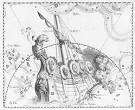
en.wikipedia.org
Argo Navis
601 × 488 - 78k - jpg |
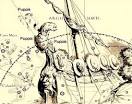
constellationsofwords.com
Argo Navis. Jason's Ship
528 × 417 - 101k - jpg |
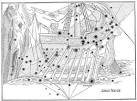
argonauts-book.com
Argo Navis, after Bayer's Star
649 × 479 - 155k - jpg |
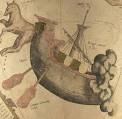
argonauts-book.com
Argo Navis by Mercator,
371 × 362 - 37k - jpg |
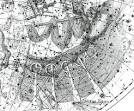
ianridpath.com
Argo.JPG
568 × 472 - 103k - jpg |

constellationsofwords.com
Argo Navis
352 × 284 - 60k - jpg |
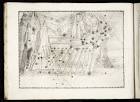
es.wikipedia.org
de Argo Navis[editar]
700 × 510 - 135k - jpg |

pa.msu.edu
Argo Navis is no longer
504 × 336 - 88k - jpg |

onemysteryless.wordpre...
Jason and the Argonauts: The
320 × 218 - 27k - jpg |

argo-navis-photo.net
Jason Fleischer. Picture
250 × 232 - 16k - jpg |

moonmentum.com
El Argo. La historia de Jasón
300 × 228 - 5k - gif |
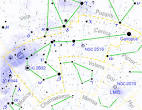
wwu.edu
Argo Navis The Ship (Carina,
771 × 599 - 93k - gif |

carlosnieto.com
Constelación de Argo Navis
386 × 480 - 165k - png |
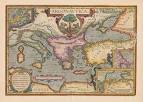
mgrazula.blogspot.com
Argo Navis represents the
800 × 572 - 160k - jpg |

tumblr.com
Argo Navis (or simply Argo) was a large constellation in the southern sky
500 × 425 - 465k - png |

moonmentum.com
constelación Argo Navis.
774 × 529 - 71k - jpg |

artworkoriginals.com
Fritz Wegner: Argo Navis the
250 × 213 - 24k - jpg |

moonmentum.com
Argo Navis fue (y,
300 × 240 - 18k - jpg |
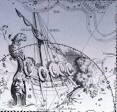
mameh.tripod.com
Argo Navis (la nave veloz) es
315 × 302 - 30k - jpg |

starrynightphotos.com
Argo Navis Constellation
800 × 533 - 76k - jpg |
|
|
|
|
|

astrofotoscolombia.blo...
La Nave de Jasón ( Carina,
400 × 268 - 43k - jpg |

lunarplanner.com
Argo Navis, Canopus and Sirius
500 × 400 - 195k - png |

constellationsofwords.com
Canopus
450 × 621 - 81k - jpg |

ianridpath.com
Argo.JPG
568 × 472 - 103k - jpg |
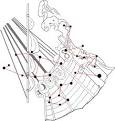
reocities.com
ARGO NAVIS in the sector
339 × 356 - 8k - gif |

argonauts-book.com
Argo Navis, after Bayer's Star
649 × 479 - 155k - jpg |

constellationsofwords.com
Argo Navis. Jason's Ship
528 × 417 - 101k - jpg |
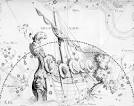
redorbit.com
Topics: Argo Navis
571 × 453 - 127k - jpg |

arsendarnay.blogspot.com
He divided Argo Navis into
1288 × 1600 - 292k - jpg |

astrofotoscolombia.blo...
es Canopus en Carina o la
1600 × 1071 - 249k - jpg |

arsendarnay.blogspot.com
If true, however, Canopus is
399 × 278 - 25k - jpg |

mgrazula.blogspot.com
Argo Navis dominates this
500 × 329 - 191k - jpg |

carlosnieto.com
Argo Navis es una embarcación
564 × 480 - 107k - jpg |

arsendarnay.blogspot.com
Canopus in Argo Navis
480 × 481 - 21k - jpg |
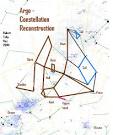
cosmoquest.org
Argo Navis Reconstruction
500 × 599 - 34k - php |

pa.msu.edu
Argo Navis was the ship used
528 × 380 - 52k - jpg |
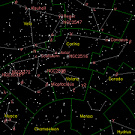
universetoday.com
of Argo Navis.
600 × 600 - 15k - gif |

redorbit.com
Topics: Argo Navis
145 × 88 - 7k - jpg |

constellationsofwords.com
argo. Urania's Mirror 1825
494 × 364 - 88k - jpg |

argonauts-book.com
Argo Navis by Mercator,
371 × 362 - 37k - jpg |
|
|
|
|
|
|
La Ciudad de Petra y la Kaaba
Según un astrónomo español, los principales monumentos de Petra, la legendaria ciudad de los nabateos en Jordania, tienen la misma orientación astronómica que la Kaaba, el lugar sagrado más importante del islam, en La Meca.
Juan Antonio Belmonte, un investigador del Instituto de Astrofísica de Canarias que se dedica a la disciplina astroarqueología, sostiene que las construcciones más importantes de Petra están orientadas hacia el solsticio de invierno y hacia Canopus, la estrella que guiaba a las caravanas por la península Arábiga. Los magníficos templos, edificios públicos y tumbas han sido esculpidos directamente en la roca, y declarados Patrimonio de la Humanidad por la UNESCO.
Petra se encuentra en un valle semidesértico, habitado por pueblos nómades hasta la llegada de los nabateos, probablemente en el siglo VI a.C. Una tribu árabe que fundó un imperio desde el mar Rojo hasta Damasco, y desde Gaza hasta los desiertos de Arabia Central. Los nabateos lograron armar un sistema de recolección y redistribución de agua, en una zona donde apenas llueve 150 milímetros al año. La ciudad alcanzó su apogeo alrededor del año 50 d.C., gracias al comercio generado por la ruta del incienso. De esa época –cuando llegó a tener al menos 20.000 habitantes– datan las construcciones más sorprendentes, talladas en la roca arenisca.
Petra siguió prosperando bajo el dominio romano y bizantino hasta el año 363, cuando sufrió un terremoto. Logró recuperarse, pero en 551, un segundo sismo le dio el golpe de gracia. Sus ruinas fueron descubiertas en 1812.
El astrónomo Belmonte midió los monumentos y, tras analizar los datos, descubrió que la astronomía y la topografía "sagrada" eran muy importantes para orientar su ubicación y estructura. Según Belmonte, el Monasterio "mira" hacia la puesta de Sol en el solsticio de invierno, un momento clave del ciclo vital. Se cree que el Monasterio, excavado en lo alto de una montaña, podría estar dedicado al rey Obodas o a Dushara, un dios lunar al que también se asociaba con el Sol; además, el solsticio de invierno se relacionaba con el nacimiento de esta divinidad. Otro de los grandes monumentos, El Tesoro, tiene igual orientación.
El astrónomo detectó que además, ambas construcciones tienen la misma orientación astronómica que la Kaaba, antes de que fuera islamizada y convertida en el principal centro de peregrinación de los musulmanes, cuando era un santuario donde se creía que había unos 360 ídolos, destruidos por el profeta Mahoma tras conquistar La Meca.
Otro templo, el de los Leones Alados, está orientado hacia Canopus, la segunda estrella más brillante del cielo que, al marcar el sur con cierta precisión, era utilizada por las caravanas para guiarse desde Petra hacia La Meca, y desde allí hacia las regiones del incienso. Según Belmonte, los dos obeliscos de más de seis metros han sido cincelados en la montaña en dirección este-oeste, de manera que al amanecer y al atardecer, y en el equinoccio, ambos están perfectamente alineados y sus sombras se tocan. El astrónomo destaca que fueron construidos en una época en la que los calendarios se regían por el equinoccio: marcaba el principio de los meses.
"Los grandes constructores del pasado, los que erigieron maravillas como Stonehenge, las pirámides de Egipto, la Kaaba o Petra, han buscado demarcar sus cimientos con la arquitectura de los cielos –señaló a Clarín el astrónomo argentino Roberto Venero–. Alinear un edificio con la posición del Sol en determinada época del año, o con la dirección de estrellas guía, es un modo de anclar nuestras supremas obras terrenas a la eternidad del cielo".
|
|
- Another site stated to have a Black Stone was at Petra
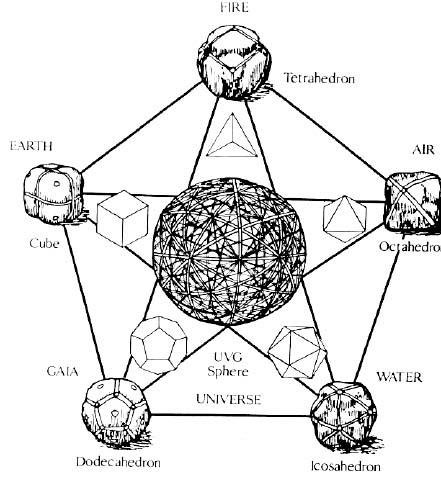
|
|
|
|
|
|
|
|
LA ILUMINA-SION TIENE FUERTE NEXO CON EL PACTO EN CONTEXTO AL ARCA DE NOE
COLUMBIA, LA PALOMA DE NOE-¿CUAL ES EL NEXO DEL "EXPERIMENTO PHILADELPHIA" CON EL ARCA DE NOE? ¿PORQUE PROYECTO ARCO IRIS? NEXO CANOPUS / ARGO NAVIS / CARINA / ARCA DE NOE
Columba (constelación)
Columba, Latín para palomo, es una pequeña constelación justo al sur de Canis Major y Lepus. Fue sacada de la constelación Canis Major por Augustin Royer, en 1679.
Dado que fue creada en el siglo XVII, por la separación de una constelación ya existente, no tiene mitología relacionada, de manera independiente.
Puede referirse a la paloma que los Argonautas envían para determinar si pueden pasar por el estrecho del mar negro. También, es la paloma que Nóe utilizó en su arca.

Columba, la Paloma, junto al Can Mayor.

NOTEN EL ARCO IRIS
Iris
De Wikipedia, la enciclopedia libre

El iris es la zona azul (en este caso). Las otras estructuras visibles son la pupila en el centro y la esclera que corresponde al sector de color blanco. La esclera está cubierta por una membrana transparente que se llama conjuntiva.
El iris, en anatomía, es la membrana coloreada y circular del ojo que separa la cámara anterior de la cámara posterior. Posee una apertura central de tamaño variable que comunica las dos cámaras: la pupila.
Corresponde a la porción más anterior de la túnica vascular, la cual forma un diafragma contráctil delante del cristalino. Se ubica tras la córnea, entre la cámara anterior y el cristalino, al que cubre en mayor o menor medida en función de su dilatación.

1. Salmos 74:2: Acuérdate de tu congregación, la que adqu IRISte desde tiempos antiguos, La que redimiste para hacerla la tribu de tu herencia; Este monte de Sion, donde has habitado.
2. Ezequiel 1:28: Como parece el arco IRIS que está en las nubes el día que llueve, así era el parecer del resplandor alrededor. Esta fue la visión de la semejanza de la gloria de Jehová. Y cuando yo la vi, me postré sobre mi rostro, y oí la voz de uno que hablaba.
3. Apocalipsis 4:3: Y el aspecto del que estaba sentado era semejante a piedra de jaspe y de cornalina; y había alrededor del trono un arco IRIS, semejante en aspecto a la esmeralda.
4. Apocalipsis 10:1: Vi descender del cielo a otro ángel fuerte, envuelto en una nube, con el arco IRIS sobre su cabeza; y su rostro era como el sol, y sus pies como columnas de fuego.
El iris es la zona coloreada del ojo. En su centro se encuentra la pupila, de color negro; la zona blanca que se encuentra alrededor se denomina esclerótica.

Génesis
9:1 Bendijo Dios a Noé y a sus hijos, y les dijo: Fructificad y multiplicaos, y llenad la tierra.
9:2 El temor y el miedo de vosotros estarán sobre todo animal de la tierra, y sobre toda ave de los cielos, en todo lo que se mueva sobre la tierra, y en todos los peces del mar; en vuestra mano son entregados.
9:3 Todo lo que se mueve y vive, os será para mantenimiento: así como las legumbres y plantas verdes, os lo he dado todo.
9:4 Pero carne con su vida, que es su sangre, no comeréis.
9:5 Porque ciertamente demandaré la sangre de vuestras vidas; de mano de todo animal la demandaré, y de mano del hombre; de mano del varón su hermano demandaré la vida del hombre.
9:6 El que derramare sangre de hombre, por el hombre su sangre será derramada; porque a imagen de Dios es hecho el hombre.
9:7 Mas vosotros fructificad y multiplicaos; procread abundantemente en la tierra, y multiplicaos en ella.
9:8 Y habló Dios a Noé y a sus hijos con él, diciendo:
9:9 He aquí que yo establezco mi pacto con vosotros, y con vuestros descendientes después de vosotros;
9:10 y con todo ser viviente que está con vosotros; aves, animales y toda bestia de la tierra que está con vosotros, desde todos los que salieron del arca hasta todo animal de la tierra.
9:11 Estableceré mi pacto con vosotros, y no exterminaré ya más toda carne con aguas de diluvio, ni habrá más diluvio para destruir la tierra.
9:12 Y dijo Dios: Esta es la señal del pacto que yo establezco entre mí y vosotros y todo ser viviente que está con vosotros, por siglos perpetuos:
1. Génesis 9:13: Mi ARCO he puesto en las nubes, el cual será por señal del pacto entre mí y la tierra.
2. Génesis 9:14: Y sucederá que cuando haga venir nubes sobre la tierra, se dejará ver entonces mi ARCO en las nubes.
3. Génesis 9:16: Estará el ARCO en las nubes, y lo veré, y me acordaré del pacto perpetuo entre Dios y todo ser viviente, con toda carne que hay sobre la tierra.
|
|
|
|
|
Palin came out of nowhere almost literally from Anchorage, Alaska. (Wasilla where she was once mayor is part of Anchorage.) Alaska of all places. Why? Aside from being an allusion to the biblical 'wilderness' where the 'woman of the apocalypse' dwells, it was a continuation of the North Star motif. Indeed, the day I saw Palin for the first time in the news was the day I knew she was a 'Pole Star'. And her partner in crime, Arnold Schwarzenegger...

Anchorage had been on my radar for some time. The city anchors one of what call the 'Canopus Alignments' heavily woven into the year 2008 (though first discussed back in August 2006), very radioactive with Chernobyl and the 1968 French 'Canopus' nuclear test which was detonated on our 'Babylon' date, 'August 24'.

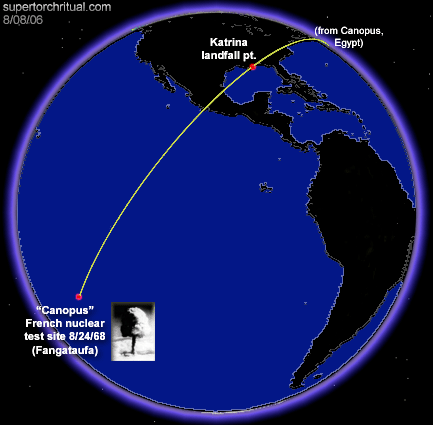
For deeper insight, it's vital that we understand where the name 'Canopus' comes from. It implies a pole star, or more specifically the 'South Star'. Canopus is the second brightest star in the sky after Sirius that, for those in the Northern Hemisphere unable to view the celestial south pole area (there is no distinctive 'South Star' at this time in history), served as the de-facto 'South Star' for navigational purposes until the invention of the magnetic compass.
Canopus can mean 'weight' and as such resonates with anchors as well as 'Anchorage'. Alaska is a North Star (flag) and its largest city (Anchorage) a South Star. Coming from Anchorage, Alaska, how can Sarah Palin not be a 'Pole Star' figure? Note also that the South Star is the 'anti-North Star', a mirror image of the 'messianic' star/constellation (King Arthur, for example, is a 'bear' figure, since arth = 'bear', as in the Great/Little Bear or Ursa Major/Minor where the North Star resides). This is reinforced by the attached 'radioactive' (nuclear) theme which resonates with 'Lucifer' (originally just a name for Venus the Morning Star) meaning 'light bringer', synonymous with 'radioactive' (radio = light). The general idea of 'Anti-Christ' is therefore hinted. There is something to this line of thinking as we'll see shortly.

Canopus would emerge again shortly before Palin's triumphal entry, coming in the form of the Russia-Georgia war, practically starting on the day of the Beijing Olympics opening ceremony (Aug. 8).

Aug 08 Russian tanks enter South Ossetia

The region today occupied by Georgia was Colchis in ancient times where according to mythology the fabled 'Golden Fleece' was kept. This was the relic Jason and the Argonauts famously set out to procure as they traveled on the great ship 'Argo' ('Ark') represented in the sky by the defunct constellation 'Argo' which has Canopus as its brightest star (signifying the stern/ladder).
The Beijing Olympics in this way started with Canopus (Georgia war) and ended with Canopus (nuke test anniversary) - beautifully, or ominously, setting the stage for the rollout of the Whore of Babylon, an 'Antichristic' figure out of the Canopian wilderness called Anchorage, Alaska.
It's also noteworthy that the capital of America's Georgia, the state, is Atlanta, boasting a 'phoenix' official seal.

Not necessarily saying all these patterns are exclusively about Sarah Palin. She is, however, definitely not far from the eye of the Mayan Storm.
Clues are abundant and insistent. Palin, or what she represents, is trouble. We do not want this Pandora's Box anywhere near the White House. I'd like to stress again that it was before October 23 - a full month earlier in fact - that I began pushing the 'Palin 2012' projection when the media and the majority of the voters were still laughing at her extreme lack of knowledge revealed during her few but disastrous high-profile interviews done in September.
Excerpt from my September 24 post (in STRUG):
...Well, my view continues to be that, despite the big threat from 'Hurricane Palin', Obama is on track to win the election. [...] As for Sarah Palin, I think her 'birth' is more about the future not unlike Hillary, i.e. the next election... in 2012, following the pattern of Obama's rise which started at the 2004 Democratic National Convention (the powerful keynote speech he gave there is the reason he's now one step away from the presidency). How will Palin and Schwarzenegger, another 'Mayan' presidential material closely monitored around here for years now, interact with each other, if at all? Not sure. Perhaps we'll see an epic battle between the two during the primary race. And/or perhaps Palin will choose Schwarzenegger as her running mate! There is of course still the issue of the Constitution preventing Arnold - born outside of the US - from becoming president as well as vice president...
It was only after her first and only vice presidential debate on October 2nd where she did okay (by her standard) that some slowly began contemplating the possibility of 'Palin in 2012'.
In other words, having demonstrated foresight concerning this matter, my evaluation of Sarah Palin in terms of what she represents in the big picture should not be taken as something on the same level as, for example, the widespread and predictable speculation of Obama being the Antichrist. I'm coming from a whole different level. It's a whole different game. This is multicontextual. What I'm dealing with here are serious patterns.
Still, it wasn't until relatively late mid October that a vital and disturbing piece of the puzzle finally fell into place. STRUG reader AOS wisely thought it important to bring to my attention a little known, pre-Da Vinci Code film called 'Revelation' (2001) - incidentally one of my favorite overtly esoteric/Gnostic movies - which weaves together similar subject matters from a slightly different angle. As the reader wrote, the story is:
...about a cloning conspiracy that could change history, an ancient code and a secret society. It involved the Knights Templar, an alchemist named Mira, and the Black Pope. [...] I am sure you are aware of it, but to make a long story short, in the movie the alchemist (with the help of others) figures out a clue about 'PALINGENESIS'. Palin in Greek, of course, meaning again or anew and GENESIS meaning born. Together, in the movie, they meant, born again or rebirth. With all your talk about birth, PALIN and so forth, I couldn't resist sharing. [...] MIRA in the movie... said PALINGENESIS is an alchemist term meaning life from death...

'Bingo!', naturally, was my immediate reaction.
This was it. Palin and all her pregnancy/birth/rebirth/phoenix symbolisms. They were whispering: 'Palin Birth', 'Palin Genesis'... 'Palingenesis'! Mayan Palingenesis.
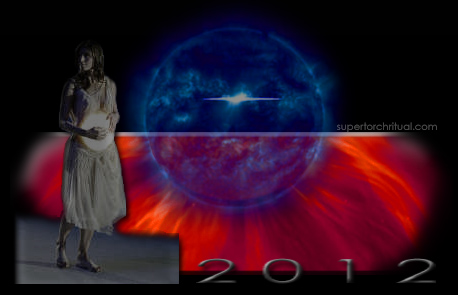
The reader didn't mention this, but the cloned baby in the story is an Antichristic 'messiah' welcomed by the whole world!

Counterbalancing the rise of darkness behind the scenes in the wilderness is the birth of a 'real' Grail child, almost completely hidden from the world. The birth scene is prefaced by a quick shot of Revelation chapter 12 passages discussing the 'woman of the Apocalypse' giving birth to a man-child who will rule the world.

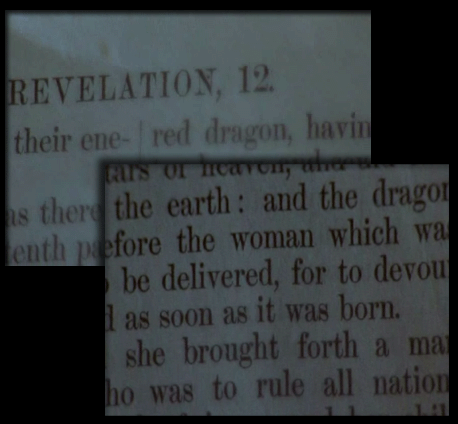
Twin birth of a false messiah and a true messiah...
 That's almost exactly what we have in Babylon A.D. released August 29, birthday of Hathor/Sekhmet the 'Scarlet Lady', the day Palin was 'born' as the Whore of Babylon. A mysterious woman on the run, virgin but pregnant with twins, sought after by powerful groups seeing in the 'Babylon Babies' messianic potential in terms of political power play and world domination. In other words, 'Antichrist' material. That's almost exactly what we have in Babylon A.D. released August 29, birthday of Hathor/Sekhmet the 'Scarlet Lady', the day Palin was 'born' as the Whore of Babylon. A mysterious woman on the run, virgin but pregnant with twins, sought after by powerful groups seeing in the 'Babylon Babies' messianic potential in terms of political power play and world domination. In other words, 'Antichrist' material.
The Tower of Babel/Babylon, sometimes evoking the Grail DNA double-helix and vice versa, is not only a Stairway to Heaven, but also a Stairway to Nazi-style fascism (Hitler being the modern 'Antichrist' archetype).
 
Get this: In a political context, the term 'Palingenesis' refers to... fascism! From Wikipedia's 'Palingenesis' entry:
...the doctrines which are used to comprise the political ideology of fascism often move to describe it as a "palingenetic ideology", primarily as a result of the notion that fascism itself is the rebirth of a state and/or empire in the image of that which came before it - thus, the ancestral political underpinnings. Specifically academic political theorist Roger Griffin refers to fascism as "palingenetic ultranationalism". The best examples of this can be found with both Fascist Italy and Nazi Germany - Italy looking to establish a palingenetic line between the 20th century regime under Benito Mussolini as being the second incarnation of the Roman Empire, while Adolf Hitler's regime was seen as being the third palingenetic incarnation - beginning first with the Holy Roman Empire ("First Reich") then with Bismarck's German Empire ("Second Reich") and then resulting in Nazi Germany ("Third Reich").
http://www.goroadachi.com/etemenanki/mayan-palingenesis.htm
|
|
|
Deep Impact Galactica
Countdown to Birth of 'Lucifer' 2010-2012
January 18, 2007
by Goro (goroadachi.com)


Sometimes fiction is just fiction. Sometimes life mimics art. Sometimes reality and fantasy are the same... in real time.
The graphic collage above is from a recent episode of Battlestar Galactica aired December 8, 2006 on SciFi Channel. Titled 'The Passage', the episode had a simple storyline: The fleet's food supply has been contaminated with radiation, which forces them to go to a certain planet. To get there they have to go through a highly radioactive star cluster and the pilots are given octagonal badges to monitor radiation levels (radiation turns the badge increasingly black). The mission is extremely dangerous and proves deadly for some, including a heroic pilot who stays in the radioactive area too long trying to save a civilian ship. The fleet does manage to get past the star cluster.
In the real world and on the same day (December 8, 2006), Earth was experiencing a severe radiation storm brought on by one of the two X-class solar flare unleashed on December 5/6, which was followed by another set of twin X-flares on December 13 and 14, powerful enough to raise some concerns for satellites in orbit around the earth.

 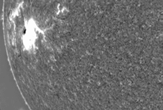
Sun Unleashes Major Flare | Scientists Spot 'Tsunami' on the Sun
'X-flares' are those that belong to the most powerful category of solar flares (as explained here) and while they're not necessarily rare, the latest ones - four of them in a short period of time - caught people completely off-guard, as noted on space.com:
This latest event has set off a radiation storm that is preventing some sun-watching satellites from doing their jobs. Such storms are fairly common when the Sun is at its most active, but they are rare during the current low point in the 11-year cycle of solar activity.
The flares came out of nowhere... if you weren't paying attention to the multicontextual patterns encoded into the flow of 'reality'... for there actually was a stream of discernable signals pointing to the Sun, as suggested in 'X Marks the Spot' which was posted here on December 1st (that's four days before Sunspot 930 began exploding). The article contained a clear enough 'preview' of what was ahead right at the beginning and at the end:


Hmm... talk about 'X (flare) Marks the Spot'. (The 'double-sun' motif was cogently expressed through the twin double X-flares.) Speaking of 'prophetic' patterns, right now - 2006/2007 - is 'solar minimum' or when the Sun is supposed to be going through its quietest phase, which is also when the Sun begins a new cycle. The one starting now, labeled 'Cycle 24', is projected to peak ('solar maximum') in 2010-2012, ominously coinciding with the 'end' of the Mayan calendar.

The connection is intensified by the curious 'coincidence' of Mel Gibson's new film about the Mayan civilization, Apocalypto, being released on December 8th... right at the time of the solar flares/radiation storm and the 'radioactive' Battlestar Galactica episode.

December 8th is also our annual 'Damage Plan Disclosure Day', apparently acknowledged by the launch of Discovery STS-116, originally scheduled for December 7th and then pushed back to the 9th. 'Disclosure', 'Discovery', and 'Apocalypto', meaning 'I reveal', together conveyed basically the same 'message', hinting at a momentous revelation... concerning the Mayan 'end time'.
It also represented an 'instruction' prompting us to examine the Book of Revelation... specifically chapter 12 - corresponding to December the 12th month. Applying the early December time frame, we were apparently to pay attention to the beginning verses of the Revelation, which happen to tell a story I had already been carefully tracking as a 'script' underlying this very period and a development 'prophesied' during the opening ceremony of the Athens Olympics in 2004... the year of the Transit of Venus.
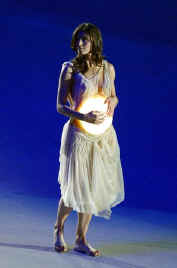 

From Book of Revelation...
12:1 And there appeared a great wonder in heaven; a woman clothed with the sun, and the moon under her feet, and upon her head a crown of twelve stars:
12:2 And she being with child cried, travailing in birth, and pained to be delivered.
12:3 And there appeared another wonder in heaven; and behold a great red dragon, having seven heads and ten horns, and seven crowns upon his heads.
12:4 And his tail drew the third part of the stars of heaven, and did cast them to the earth: and the dragon stood before the woman which was ready to be delivered, for to devour her child as soon as it was born.
12:5 And she brought forth a man child, who was to rule all nations with a rod of iron: and her child was caught up unto God, and to his throne.
12:6 And the woman fled into the wilderness, where she hath a place prepared of God, that they should feed her there a thousand two hundred and threescore days.
12:7 And there was war in heaven: Michael and his angels fought against the dragon; and the dragon fought and his angels,
12:8 And prevailed not; neither was their place found any more in heaven.
12:9 And the great dragon was cast out, that old serpent, called the Devil, and Satan, which deceiveth the whole world: he was cast out into the earth, and his angels were cast out with him.
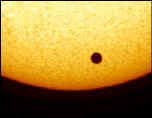 The 'woman clothed with the sun' would be the rare event of the goddess star Venus passing right in front of the Sun, called the 'Transit of Venus', that became the biggest celestial event of 2004 just a couple of months before the Athens Olympics where the story was reenacted through a pregnant woman giving birth to a 'messianic' child in front of a DNA double-helix 'dragon'. The 'woman clothed with the sun' would be the rare event of the goddess star Venus passing right in front of the Sun, called the 'Transit of Venus', that became the biggest celestial event of 2004 just a couple of months before the Athens Olympics where the story was reenacted through a pregnant woman giving birth to a 'messianic' child in front of a DNA double-helix 'dragon'.
|
|
|
|
|
|
|

Diluvio de Noé
La leyenda del Diluvio de Noé comienza en Acuario durante la era astrológica de Tauro, y sigue la trayectoria del sol a través de la eclíptica de Acuario a Piscis a Aries a Tauro a Géminis. Para mayor referencia, véase el Edén para Babel y un mapa de la Zodiac .
Primera Imagen
Noé personifica Acuario del Waterman.
9 Estas son las generaciones de Noé. Noé era un hombre justo y honrado en su generación; Noé caminó con Dios. (Génesis 6: 9)
Los animales entraron en el arca de dos en dos.
9 de dos en dos, macho y hembra, entró en el arca con Noé, como mandó Dios a Noé. (Génesis 7: 9)
Cuando el sol pasa a Aries, la tierra estaba seca. El cordero simboliza la tierra.
14 En el mes segundo, a los veintisiete días del mes, se secó la tierra. (Génesis 8: 13-14)

Segunda imagen
El Argo Navis es una gran constelación de tal manera que se dividió en tres constelaciones: Carina, Puppis y Vela, en representación de la quilla, popa y vela respectivamente. Se encuentra mucho más al sur en el Trópico de Capricornio celestial. Los tres sectores de Capricornio, Acuario y Piscis contienen una gran cantidad de constelaciones acuosas y eran conocidos por antiguos como el mar.
Noé envió un cuervo a buscar tierra firme. El cuervo se fue de aquí para allá hasta que las aguas se secaron.
7 y envió un cuervo; y se fue de aquí para allá hasta que las aguas se secaron sobre la tierra. (Génesis 8: 7)
Después envió una paloma.
8 Y envió á la paloma, para ver si las aguas se habían retirado de sobre la faz de la tierra; (Génesis 8: 8)
Hay un mito griego clásico construido alrededor del Argo Navis, llamado Jason y la búsqueda del vellocino de oro . La historia sigue el sol en todo el zodíaco.

Tercera imagen
Noé se emborrachó y se quedó desnudo en su tienda de campaña. Cam vio su desnudez y le dijo a sus dos hermanos.
20 Noé fue el primer labrador de la tierra. Él plantó una viña;
21 y bebió del vino, y se embriagó, y yacía descubierto en su tienda.
21 Y Cam, padre de Canaán, vio la desnudez de su padre, y dijo a sus dos hermanos que estaban afuera. (Gen. 9: 20-22)
En Tauro, vemos Orion como Noé, Auriga como jamón y los gemelos Géminis como Sem y Jepheth. Los tres hijos están mirando hacia abajo a su padre.
Sem y Jafet cubrieron su padre, pero no vieron su desnudez.
23 Entonces Sem y Jafet tomaron la ropa, la pusieron sobre sus propios hombros, y andando hacia atrás, cubrieron la desnudez de su padre; sus rostros fueron rechazados, y no vieron la desnudez de su padre. (Gen. 9:23)

Génesis 9
1. Bendijo Dios a Noé y a sus hijos, y les dijo: Fructificad y multiplicaos, y llenad la tierra.
2. El temor y el miedo de vosotros estarán sobre todo animal de la tierra, y sobre toda ave de los cielos, en todo lo que se mueva sobre la tierra, y en todos los peces del mar; en vuestra mano son entregados.
3. Todo lo que se mueve y vive, os será para mantenimiento: así como las legumbres y plantas verdes, os lo he dado todo.
4. Pero carne con su vida, que es su sangre, no comeréis.
5. Porque ciertamente demandaré la sangre de vuestras vidas; de mano de todo animal la demandaré, y de mano del hombre; de mano del varón su hermano demandaré la vida del hombre.
6. El que derramare sangre de hombre, por el hombre su sangre será derramada; porque a imagen de Dios es hecho el hombre. (Es notable como aqui se relaciona la sangre con el sexto dia de la creacion, cuando fueron creados el hombre y la mujer a imagen de Dios. Es obvio que la interpretacion de este capitulo es en ese contexto. OSEA LA SANGRE, ES UNA REFERENCIA AL LINAJE.)
7. Mas vosotros fructificad y multiplicaos; procread abundantemente en la tierra, y multiplicaos en ella. (Fructificad, osea una referencia al TERCER DIA DE LA CREACION, cuando fueron credos las semillas, los arboles y los frutos. ES OBVIA LA REFERENCIA AL LINAJE. TERCER DIA CREACION= TERCER DIA DE LAS BODAS DE CANA (JUAN 2:1)= TERCER DIA DE LA RESURRECCION (JUAN 20:1). TODO TIENE EL MISMO PATRON, OSEA UNA REFERENCIA AL ACTUAL TERCER DIA DE LA SEMANA, OSEA EL MARTES, EL PLANETA ROJO, OSEA EL MISMO LINAJE)
8. Y habló Dios a Noé y a sus hijos con él, diciendo:
9. He aquí que yo establezco mi pacto con vosotros, y con vuestros descendientes después de vosotros;
10. y con todo ser viviente que está con vosotros; aves, animales y toda bestia de la tierra que está con vosotros, desde todos los que salieron del arca hasta todo animal de la tierra.
11. Estableceré mi pacto con vosotros, y no exterminaré ya más toda carne con aguas de diluvio, ni habrá más diluvio para destruir la tierra.
12. Y dijo Dios: Esta es la señal del pacto que yo establezco entre mí y vosotros y todo ser viviente que está con vosotros, por siglos perpetuos:
13. Mi arco he puesto en las nubes, el cual será por señal del pacto entre mí y la tierra.
14. Y sucederá que cuando haga venir nubes sobre la tierra, se dejará ver entonces mi arco en las nubes.
15. Y me acordaré del pacto mío, que hay entre mí y vosotros y todo ser viviente de toda carne; y no habrá más diluvio de aguas para destruir toda carne.
16. Estará el arco en las nubes, y lo veré, y me acordaré del pacto perpetuo entre Dios y todo ser viviente, con toda carne que hay sobre la tierra.
17. Dijo, pues, Dios a Noé: Esta es la señal del pacto que he establecido entre mí y toda carne que está sobre la tierra.
18. Y los hijos de Noé que salieron del arca fueron Sem, Cam y Jafet; y Cam es el padre de Canaán. (NOTEN LA REFERENCIA SUBLIMINAL A CANA, EN EL MISMO CONTEXTO AL VINO QUE TIENE UN FUERTE NEXO CON DICHAS BODAS.)
19. Estos tres son los hijos de Noé, y de ellos fue llena toda la tierra.
20. Después comenzó Noé a labrar la tierra, y plantó una viña;
21. y bebió del vino, y se embriagó, y estaba descubierto en medio de su tienda. (Hay un obvio nexo espiritual con las mismas BODAS DE CANA. ES OBVIO, EN EL CONTEXTO A ESTE CAPITULO, QUE EL VINO TIENE UNA FUERTE CONNOTACION CON EL LINAJE. INSISTO TERCER DIA, TIENE FUERTE NEXO CON EL TERCER DIA DE LA CREACION.)
22. Y Cam, padre de Canaán, vio la desnudez de su padre, y lo dijo a sus dos hermanos que estaban afuera.
23. Entonces Sem y Jafet tomaron la ropa, y la pusieron sobre sus propios hombros, y andando hacia atrás, cubrieron la desnudez de su padre, teniendo vueltos sus rostros, y así no vieron la desnudez de su padre.
24. Y despertó Noé de su embriaguez, y supo lo que le había hecho su hijo más joven,
25. y dijo: Maldito sea Canaán; Siervo de siervos será a sus hermanos. (CUANDO CRISTO HACE REFERENCIA A QUE NOSOTROS TENEMOS QUE SER SIERVOS, TIENE ESTA CONNOTACION, OSEA EN UN FUERTE MARCO CON LAS BODAS DE CANA. INCLUSO EN EL MISMO PACTO CON NEXO CON EL 911, EN EL MISMO CONTEXTO AL CAPITULO 9:11 DE ESTE CAPITULO.)
26. Dijo más: Bendito por Jehová mi Dios sea Sem, Y sea Canaán su siervo.
27. Engrandezca Dios a Jafet, Y habite en las tiendas de Sem, Y sea Canaán su siervo.
28. Y vivió Noé después del diluvio trescientos cincuenta años.
29. Y fueron todos los días de Noé novecientos cincuenta años; y murió.
|
|
|
Génesis 10
1. Estas son las generaciones de los hijos de Noé: Sem, Cam y Jafet, a quienes nacieron hijos después del diluvio.
2. Los hijos de Jafet: Gomer, Magog, Madai, Javán, Tubal, Mesec y Tiras.
3. Los hijos de Gomer: Askenaz, Rifat y Togarma.
4. Los hijos de Javán: Elisa, Tarsis, Quitim y Dodanim.
5. De éstos se poblaron las costas, cada cual según su lengua, conforme a sus familias en sus naciones.
6. Los hijos de Cam: Cus, Mizraim, Fut y Canaán.
7. Y los hijos de Cus: Seba, Havila, Sabta, Raama y Sabteca. Y los hijos de Raama: Seba y Dedán. (TODA LA RELACION DE CAM, EN EL MARCO AL LINAJE CUSITA TIENE UN NEXO CON BETHSEBA, OSEA LA MADRE DEL REY SALOMON. AQUI ESTA EL SECRETO DEL NEXO DE LA INDEPENDENCIA DE LOS ESTADOS UNIDOS CON EL 4 DE JULIO, OSEA EL MISMO DIA DE BETHSEBA, EN EL SANTORAL CATOLICO. TIENE UN FUERTE NEXO CON LAS BODAS DE CANA. CONCRETAMENTE COLUMBIA / COLUMBIA / PALOMA / LL-AVE DE D-AV-ID / FILADELFIA. EL AVE ES LA MISMA PALOMA, OSEA LA SEÑAL DE JONAS, QUE EN EL CONTEXTO A DAVID ERA BETHSEBA, LA MADRE DEL REY SALOMON. EN EL CONTEXTO A GENESIS 8:8,12 LA PALOMA TIENE UN FUERTE NEXO CON EL SEPTIMO DIA. OSEA QUE COLUMBIA / COLUMBA / PALOMA EN SI MISMO ES UN NEXO CON EL SEPTIMO DIA EN EL MARCO A LAS BODAS DE CANA.)
8. Y Cus engendró a Nimrod, quien llegó a ser el primer poderoso en la tierra.
9. Este fue vigoroso cazador delante de Jehová; por lo cual se dice: Así como Nimrod, vigoroso cazador delante de Jehová.
10. Y fue el comienzo de su reino Babel, Erec, Acad y Calne, en la tierra de Sinar.
11. De esta tierra salió para Asiria, y edificó Nínive, Rehobot, Cala,
Busqueda para PALOMA
1. Génesis 8:8: Envió también de sí una PALOMA, para ver si las aguas se habían retirado de sobre la faz de la tierra.
2. Génesis 8:9: Y no halló la PALOMA donde sentar la planta de su pie, y volvió a él al arca, porque las aguas estaban aún sobre la faz de toda la tierra. Entonces él extendió su mano, y tomándola, la hizo entrar consigo en el arca.
3. Génesis 8:10: Esperó aún otros siete días, y volvió a enviar la PALOMA fuera del arca.
4. Génesis 8:11: Y la PALOMA volvió a él a la hora de la tarde; y he aquí que traía una hoja de olivo en el pico; y entendió Noé que las aguas se habían retirado de sobre la tierra.
5. Génesis 8:12: Y esperó aún otros siete días, y envió la PALOMA, la cual no volvió ya más a él.
|
|
|
|
|
 Primer Primer
 Anterior
4 a 18 de 18
Siguiente Anterior
4 a 18 de 18
Siguiente
 Último
Último

|
|
| |
|
|
©2025 - Gabitos - Todos los derechos reservados | |
|
|

